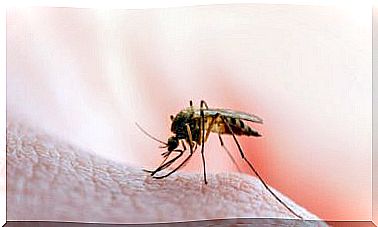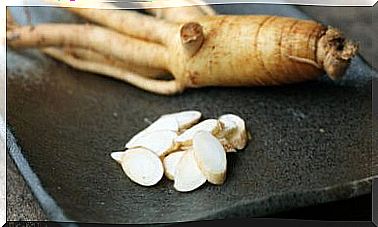Chlorphenamine: What This Antihistamine Is And How It Works
Chlorphenamine is a first generation antihistamine used to treat different allergic manifestations. These include seasonal rhinitis, conjunctivitis, and hives, for example. Also, along with epinephrine, it is used in anaphylactic reactions.
Next, we will find out how chlorphenamine works and what uses it has. We will also disclose the adverse reactions that it may present.
What is chlorphenamine?
Chlorphenamine is an antihistamine drug that prevents histamine from binding to its receptors. This is a chemical substance that is released by some cells in allergic reactions by the action of the immune system. It is, in fact, the cause of most allergic symptoms.

There are 4 different types of receptors for this substance. Chlorphenamine reversibly and competitively inhibits histamine binding to H1 receptors. These are found in the smooth muscle of blood vessels, intestines, and bronchi. We also find these types of receptors in the cardiovascular system and in the brain.
Under normal conditions, when histamine is coupled to this receptor, a series of reactions are triggered that aim to produce responses such as the following:
- Vasodilation.
- Increased permeability.
- Hypotension or low blood pressure
- Production of edema.
- Triple Lewis response: redness, erythema, and papule.
These manifestations are typical of allergic processes dependent on the activation of these H1 receptors. By administering chlorphenamine, which has an antagonistic action against them, we suppress them.
How does it work in the body?
Among its pharmacological actions those related to the antagonism of peripheral H1 receptors distributed throughout the body predominate. Chlorphenamine opposes the actions of histamine, such as the following:
- Increased capillary permeability.
- Pruritus.
- Intestinal contraction
- Bronchoconstriction.
In the central nervous system (CNS) the sedative and hypnotic action predominates, which also varies depending on the person. For this reason, chlorphenamine and the other first-generation antihistamines produce, to a greater or lesser degree, sedation and drowsiness. This fact is a limiting factor for its continued use.
In addition, chlorphenamine produces antiemetic, antinetoside and antivertiginous effects : it prevents vomiting, dizziness and dizziness.
At toxic doses, it tends to produce intense central stimulation and can lead to seizures. In children a picture of excitement and agitation may occur. It can also cause dry mouth and mucous membranes.
Adverse reactions
The adverse effects of chlorphenamine are abundant and relatively frequent. They depend on the dose and the patient. The most common reactions are those that are caused by CNS depression, such as:
- Drowsiness.
- Sedation.
- Delusional behavior
- Eat, in extreme cases.
Due to these adverse effects, patients should be warned that this drug can significantly affect their mental capacity. It must be taken into account when driving a vehicle or operating a machine.
These manifestations can disappear after a few days. However, if they persist, it is necessary to consider a dose reduction or change to another antihistamine. In these cases, the doctor should be consulted.
Chlorphenamine has a certain anticholinergic activity that can translate into dry mouth, nose and throat, urinary retention, blurred vision and mydriasis.
It can also cause adverse reactions in the digestive system such as nausea, vomiting, loss of appetite or diarrhea. In addition, there is a risk of producing tachycardia, hypotension or hypertension, extrasystoles and arrhythmias.

Precautions
You have to be careful if you are taking any other drug because they could interfere with each other. If the effects of chlorphenamine were enhanced by another drug, it could lead to toxicity.
It is a drug capable of crossing the placental barrier. This makes it necessary to use it with caution in case of pregnancy or suspicion of it. In any case, you should consult your doctor beforehand.
How is chlorphenamine administered?
Chlorphenamine is usually given orally as it is fairly well absorbed. However, it can also be administered by the skin, intramuscular or intravenous route.
The presence of food in the stomach causes the absorption of chlorphenamine to be delayed. The onset of the antiallergic action of chlorpheniramine is observed after 30-60 minutes and the duration of the effects varies between 4 and 8 hours. It must be taken into account that it is metabolized in a very important way in the liver.
Chlorphenamine, the antihistamine in flu preparations
As we have seen, chlorphenamine is an antihistamine used to treat different allergic symptoms such as rhinitis, conjunctivitis or hives. Keep in mind that it tends to cause some drowsiness.
This antihistamine is part of most flu or cold preparations that can be obtained without a prescription in pharmacies. However, it is important not to forget that it can also cause certain side effects. Therefore, it is necessary to consult a doctor if you have any doubts.









